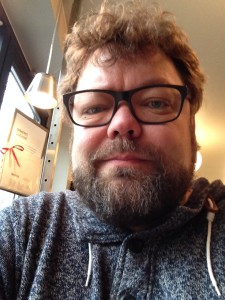Morten Søndergaard and Geert Mul,
“The Language of the Big Data Archive”
Memory is a medium, Benjamin writes in his personal journal, and should thus not be considered an instrument for exploring the past. He continues:
It is the medium of that which is experienced […] the “matter itself” is no more that the strata which yield their long-sought secrets only to the most meticulous investigation. That is to say, they yield those images that, severed from all earlier associations, reside as treasures in the sober rooms of our later insights – like torsos in a collector’s gallery. (Leslie, Marx, & Walter Benjamin Archiv., 2007)
The logic of the memory as a medium is manifested in the archive. Traditionally, that logic has primarily been conducted in a scientific vernacular with objects, data, files, indexes, categories, contextualisations, and conceptualisations – the ‘matrix’ of the archive. However, as Benjamin points out, there is another archive-situation at hand: one which does not address that which was immediately indexed and categorized, but constitute an emergent sub-strata of secrets. They are to be visited and found later, in a different pace. They constitute a hidden matrix beneath the scientific matrix of the traditional archive – one that the medium does not mediate.
However, the situation of post-media and a culture of ubiquitous information, which is moving past the second phase of computing (Weinberger, 2007) and into what has become known as Big Data, not only challenge the scientific matrix of the archive; it transforms it. And with it, the unmediated parts of the archive are transformed as well. They resurface.
Today, it is safe to say that the original scientific matrix of the archive is being projected onto a number of other matrices, constituting the archive as a new medium of Big Data. To operate with archives in this situation becomes more a creative act than a speculative one. This paper wants to look further into this creative act and ask the following questions: What is the language of the archive as new medium for Big Data? What matrices are operational in the new medium? How do we apply the matrices of this new medium into curatorial and artistic practices?
Leslie, E., Marx, U., & Walter Benjamin Archiv. (2007). Walter Benjamin’s Archive : images, texts, signs. London ; New York: Verso.
Weinberger, D. (2007). Everything is miscellaneous : the power of the new digital disorder. New York: Holt.
Morten Søndergaard is Associate Professor of Interactive Media Art at Aalborg University Copenhagen (DK) where he is head of research of the Unheard Avant-garde project at the LARM audio archive infrastructure (2010-14). He is also an independent and internationally operating Media Art Curator. Contributing editor at LEA (2011-) and Associated Curator at Kasa Gallery, Istanbul (2013-) and DIAS Digital Arts Gallery, Denmark (2013-). Co-founder and General Chair of the LEA Sound Art Curating Conference Series. Board Member of OCR. Previously Curator / Deputy Director at the Museum of Contemporary Art in Roskilde (1999-2008); Senior Curator and General Chair of the re-new festival of digital arts – www.re-new.org – in Copenhagen (2009-12); In 2010 he commissioned Stelarc’s Internet Ear Project for the exhibition Biotopia – Art in the Wet Zone (2010-11); Curator of The Unheard Avant-garde in Scandinavia section at the Sound Art – Sound as Medium for Art exhibition at ZKM, Karlsruhe, March 2012 – January 2013. Has published widely on (new) media art, sound art, and media art archiving and -curating in English and Danish.
Further information at www.sondergart.dk
